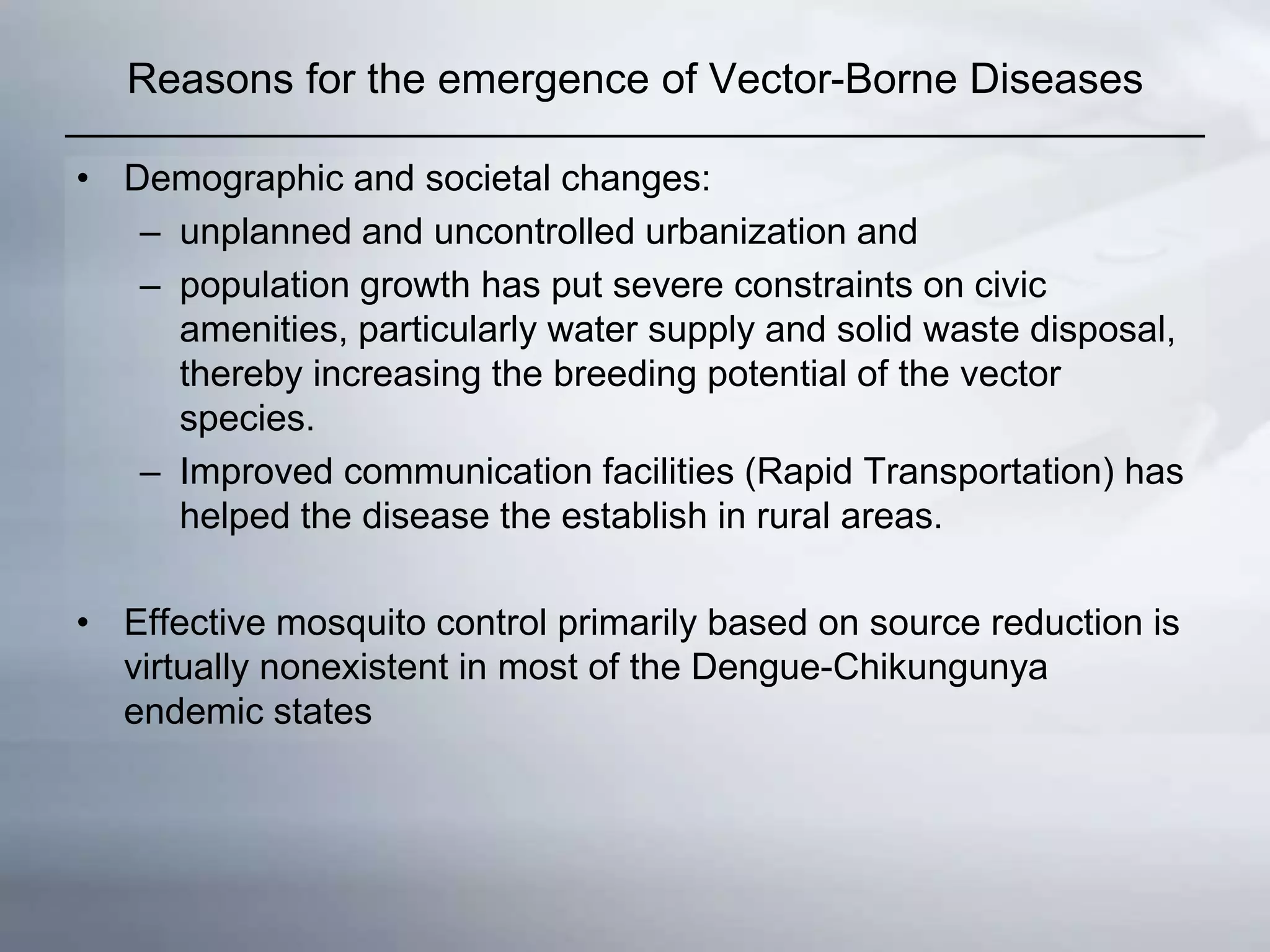The document discusses vector-borne diseases, focusing on their transmission via vectors like mosquitoes and the role of hospitals in their control. It highlights the growing threat of diseases such as malaria and dengue fever, citing rising cases and deaths in India, and emphasizes the need for integrated vector management strategies involving community cooperation. Key prevention methods, surveillance, treatment, and the hospital’s role in education and service delivery are also outlined to combat these diseases.






























